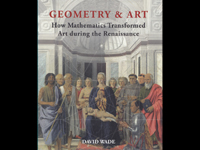Sacred Geometry
The principles of sacred geometry underlie the beauty and order of the natural world, sacred art and architecture, and even certain works of music and poetry. The imprint of sacred geometry can be found throughout history in forms as diverse as Stonehenge and the Great Pyramid, Celtic crosses, Gothic cathedrals, Islamic arabesques, indigenous art and the teachings of Pythagoras and Plato. In nature, sacred geometry manifests as archetypal patterns (branches, circles and spheres, spirals). Yet all these expressions of the inexhaustible source of life are based on surprisingly few concepts: pattern, number, sequence, symmetry, proportion, harmony, and unity arising from diversity.
The Divine
Proportion
H.E. Huntley
Dover (1970)
The book shows how geometry, and specifically the ‘divine proportion’ or ‘golden ratio,’ underlies the aesthetic beauty and order of the natural world, art and architecture and even certain works of poetry.
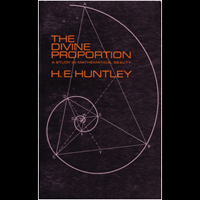
The Mystic
Spiral
Jill Purce
Thames and Hudson (1974)
The spiral is not only a fundamental pattern of growth in nature, but also a symbol of the progress of the soul towards awakening and eternal life. Jill Purce traces the significance of the spiral from Stone Age art to Celtic crosses to Islamic arabesques.
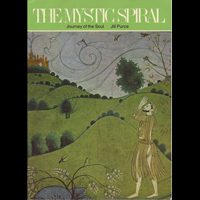
Islamic Patterns
Keith Critchlow
Schocken Books (1976)
The abstract geometrical patterns of Islamic art are based on underlying mathematical principles that reveal the cosmological laws of creation in which unity is expressed in diversity.
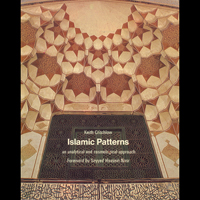
Geometric
Concepts in Islamic Art
Issam El-Said and Ayse Parman
World of Islam Festival Publishing (1976)
This scholarly study employs diagrams, patterns and text to illustrate how Islamic art designs were created by dividing the circle by whole numbers and fractions.
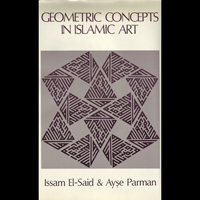
The Geometry
of Art and Life
Matila Ghyka
Dover (1977)
This illustrated book traces the ideas of Plato, Pythagoras, Kepler and others as they explored the order, harmony and proportion inherent in nature, human life and many works of art, sculpture and architecture.
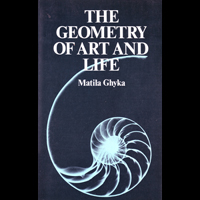
The Curves
of Life
Theodore Cook
Dover (1979)
The author shows how the spiral or helix is fundamental to the structure of plants, shells and the human body; the periodicity of atomic elements; to DNA and the Andromeda nebula.
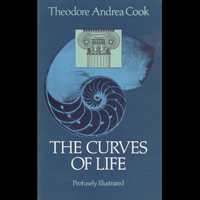
Order in Space
Keith Critchlow
Thames and Hudson (1979)
Critchlow provides a systematic analysis of the mathematics and geometries that define space, using illustrations, diagrams and formulas to convey the inter-relationship of space, structure and design.
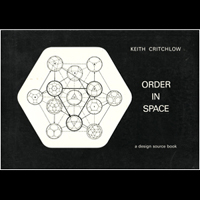
Sacred Geometry
Nigel Pennick
Harper & Row (1980)
Sacred Geometry investigates basic geometrical forms and patterns that express the principles of sacred geometry revealed in the monuments and structures of antiquity, the art of the Renaissance, Gothic cathedrals and Islamic architecture.
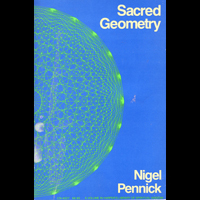
The
Power of Limits
György Doczi
Shambhala (1981)
The volume is a groundbreaking study of proportional harmonies in nature, art and architecture, revealing the forms and patterns that create a universal harmony and order uniting all aspects of existence.
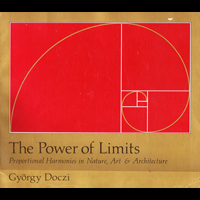
Sacred Geometry
Robert Lawlor
Thames and Hudson (1982)
Robert Lawlor sets out the systems of number, shape and proportion that determine the dimension and form of both human and natural structures, from Gothic cathedrals to flowers, from music to the human body.
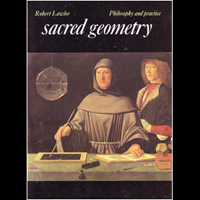
Symmetries
of Islamic Geometrical Patterns
Syed Jan Abas and Amer Shaker Salman
World Scientific Publishing (1998)
Islamic symmetrical patterns join art and mathematics in an expression of the underlying unity and harmony of creation. The book includes a collection of more than 250 Islamic patterns.
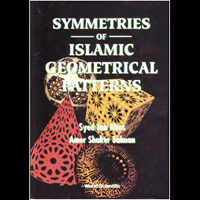
Geometric
Patterns from Islamic Art and Architecture
Robert Field
Tarquin Publications (1998)
Inspired by the architecture of Moorish Spain, North Africa and the Middle East, Robert Field explores the rich designs and patterns of Islamic art and architecture.
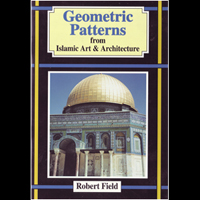
The Golden
Ratio
Mario Livio
Broadway Books (2003)
In this fascinating book, Dr. Livio examines the nature of phi (ø) or 1.618, the world’s most intriguing number and the mathematical basis of numerous forms in nature, such as crystals, shells, sunflowers and galaxies.
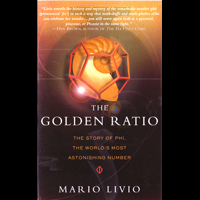
The Mystery
of Numbers
Marc-Alain Ouaknin
Assouline (2004)
Scholar and rabbi Marc-Alain Ouaknin explores, from a spiritual perspective, the history, symbolism and philosophy of figures and numbers throughout civilizations from India to Persia to Europe.
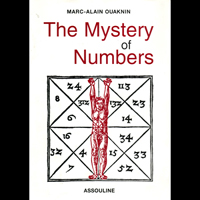
Divine Proportion
Priyo Hemenway
Sterling (2005)
Countless illustrations and illuminating text show how the Divine Proportion (ø or phi) connects patterns of growth with natural laws, proportion and symmetry and principles of artistic design in everything from the leaf pattern of plants, the growth of the human body, to the spiral patterns of a hurricane.
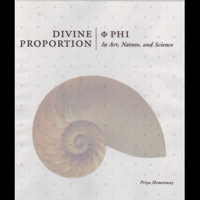
Sacred Geometry
Stephen Skinner
Sterling (2006)
This superbly illustrated book shows how the beauty in nature, music, art and architecture is based on an underlying geometry of repeating patterns and harmoniously proportional shapes. It is truly a feast for the mind and eye.
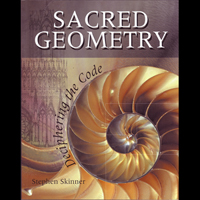
Math for Mystics
Renna Shesso
Weiser Books (2007)
Renna Shesso shows how numbers and mathematics are an integral part of modern magic and traditional occult teachings. Topics include planetary cycles, the Platonic Solids, the Fibonacci sequence and magic squares.
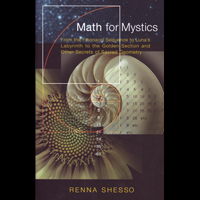
The Dimensions
of Paradise
John Mitchell
Inner Traditions (2008)
Acclaimed scholar and researcher John Mitchell reveals how numbers and sacred geometry underlie the essential order of the universe and the structure of ancient monuments like Stonehenge, the Parthenon and the Great Pyramid.
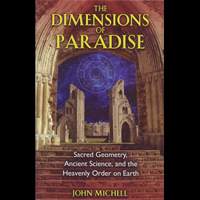
The Loom of
God
Clifford Pickover
Sterling (2009)
The Loom of God brings together mathematics, mysticism and science fiction to explain the eternal magic of numbers: “Mathematics is the loom upon which God weaves the fabric of the universe.”
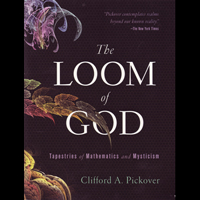
The Math Book
Clifford Pickover
Sterling (2009)
Prolific author and polymath Dr. Clifford Pickover has provided a veritable history of mathematics by identifying 250 of the most intriguing mathematical milestones and discoveries, ranging from prehistoric times to the present age. Fully illustrated and written for both the layman and expert.
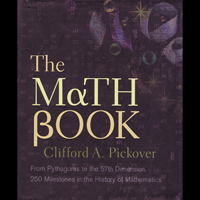
The Mandala
Book: Patterns of the Universe
Lori Bailey Cunningham
Sterling (2010)
The mandala is an archetypal symbol of wholeness that manifests in art, architecture, religion and the natural universe. The Mandala Book is a visual symphony of over 500 beautiful colour images of mandalic patterns and shapes that are both inspiring and informative.
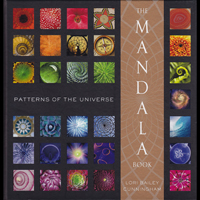
Secrets of
Infinity
Antonio Lamna
Firefly Books (2013)
Secrets of Infinity examines the concept of infinity from antiquity to modern times as expressed through philosophy, art, symbolism, science and mathematics. The elusive nature of infinity is revealed as a universal symbol of “divine eternity” transcending culture and disciplines and pointing to the inexpressible.
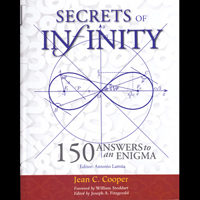
Beautiful Geometry
Eli Maor and Eugen Jost
Princeton University Press (2014)
The volume combines a history of geometry with visually compelling images of geometric patterns, principles and theorems. The text by math historian Eli Maor is lucid and informative, and wonderfully complemented by the original colour plates by Swiss artist Eugen Jost.

The Beauty
of Numbers in Nature
Ian Stewart
The MIT Press (2017)
The book explores the mathematical patterns and principles that underlie the natural world. From atoms to seashells to plant and animal patterns to galaxies, mathematical principles such as symmetry, spirals, branches and fractals define the universal forms and shapes which constitute the natural world around us.
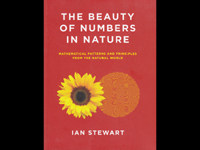
Geometry &
Art
David Wade
Shelter Harbor Press (2017)
During the Renaissance, mathematics and geometry transformed art and culture. The book shows how the philosophical teachings of Plato and Pythagoras influenced the art of Europe, especially such notable artists as Leonardo da Vinci, Paulo Uccello and Albrecht Dürer.
